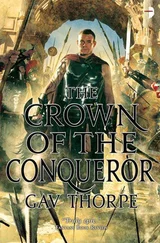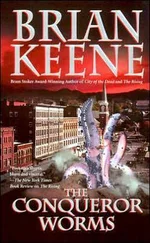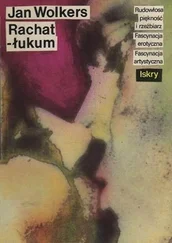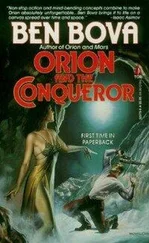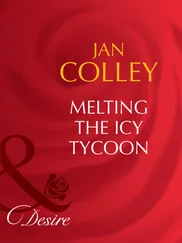He eyed this new object, a tracery of silver on a black circle. He stared at it for a long time, so long that he began to discern the corner of something unforeseeable. He felt almost afraid, as if he had discovered something dangerous, an unknown weapon with enormous potential.
Jonas Wergeland had produced his first programme.
It would not be totally amiss to look upon Jonas Wergeland’s magnificent television series as an extension of sorts of the project at Steinbruvannet, slivers of ice set at different angles to one another to create a three-dimensional space. Or, if you will: a national monument constructed out of crystalline fragments.
Jonas Wergeland’s programmes were, as I say, subjected to vigorous reassessment after his arrest. Suddenly it seemed that everybody and their uncle could see that Thinking Big was a mass of transparent segments and felt, therefore, duty-bound to sing out like the little boy in ‘The Emperor’s New Clothes’. One after another they came forward to prove that this ‘monumental work’, as it had been called, was both cold and cynical and fell into a million pieces at the slightest, critical touch.
One of the few things which might merit our attention is an interview with one of Jonas Wergeland’s closest colleagues — an exception, this article, in that the emphasis was placed not on Wergeland’s arrogance and effrontery, or his brutality: the fact that he would trample over anyone who got in his way, not unlike the case of the Emperor Qin Shihuang and the Great Wall of China. Instead what was communicated here was an ill-concealed bitterness over the fact that Jonas Wergeland had taken all the credit. This colleague claimed that Wergeland never knew where to draw the line; while he might well have been a wizard once everything was in the can and the post-production work begun, he needed the assistance of a critical eye at the actual planning stage. Jonas Wergeland’s great failing was his tendency to want to include too much, to bite off more than he could chew. His colleague used the programme on Sigrid Undset as an example, and I think it is worth our while to dwell for a moment on this programme, seeing that it turned out to be one of the series’ real tours de force, the one which was bought by the greatest number of television channels worldwide.
Originally, if this source is to be believed, Jonas wanted to include scenes from Sigrid Undset’s sojourn on the Swedish island of Gotland and her later visit to Carl Linnaeus’s home, Hammerby Manor near Uppsala, its rooms papered with drawings of flowers; Jonas was particularly keen to highlight the legendary moment when she leans down in this chapel to nature and kisses von Linnaeus’s desk, just as pilgrims kiss the statues of saints. In his head Jonas had a clear idea of how telling this scene would be: Undset virtually kissing the ideal of the Grand Scheme of Things, the Great Classification, in which everything falls neatly into a certain order — a parallel to Catholicism; but his colleague had managed to foil this suggestion, thereby, as he saw it, not only saving NRK the considerable cost of a trip to Sweden, which was now cancelled, but also laying the foundations of a better programme — and receiving no credit for it. To his mind, he was the Ezra Pound to T. S. Eliot’s The Waste Land .
I am not sure that he is right, Professor. If you examine the key scene in the Undset programme, the walk through an English forest, you will notice how it seethes with botanical life; one could quite safely say that this scene was a visual kiss from Linnaeus. I think his colleague underestimated, and misunderstood, Jonas Wergeland’s creative genius: was blind to the way in which he was forever reworking his original ideas to produce simpler and simpler solutions, moved by a desire — ideally, at any rate — to reduce the chaotic raw material of each life to a few surprising strands, preferably no more than two, which he could twine together, like a double helix, in such a way that they nevertheless provided a picture of a complex, organic life.
You could say that with their ‘unveilings’ the newspapers were only giving Jonas Wergeland a taste of his own medicine, since that’s exactly what he set out to do to his heroes, to unveil them, as in removing the veil from them. This is demonstrated in exemplary fashion in the opening scene of the Undset programme in which the central character slowly, lingeringly, looking straight at the camera, unbinds her coil of hair, that characteristic braid so often seen in pictures of her, and lets her long locks tumble down over her shoulders — this in itself coming as a shock of relief to many viewers, especially faithful women readers of Sigrid Undset’s books who were used to the standard book-jacket portraits: the chaste features and the hair pinned up tightly on the top of her head, like a crown of thorns, an image which, even before one opened the book, spoke of a content suffused with momentous gravity, with the weight of the dark weft of human lives. Right at the very start Jonas Wergeland shattered this main cliché about Undset and showed her to be — apparently, at least, and thanks largely to Ella Strand’s magnetic presence — a lusty woman, a woman capable of torrid embraces and passionate kisses, of enjoying a drop or two, of laughing even.
A nigh-on impossible thought: Sigrid Undset laughing. It was almost indecent, like being offered a peek inside the legendary Undset shell. But this was the very aspect which Jonas Wergeland highlighted, because in his eyes — and setting aside her undeniable gifts as a storyteller — the key to Undset’s artistic success lay in her sensuality, her recognition of the power of the senses, of love as an unstoppable primal force, reminding one not so much of historical novels as of the books of an author she herself greatly admired: D. H. Lawrence. In a way — and this is something which many people considered paradoxical — the programme on Sigrid Undset was the most erotic in the whole of Jonas Wergeland’s television series with its undercurrent of almost startling lust, a covert voluptuousness which was perceived more by the intuition than by the eye.
Personally — if I may say so — I consider the Undset programme as a prime example of how well Jonas Wergeland succeeded in conveying the essence of a life simply by twining two aspects together to good effect. One of the programme’s two main elements was a walk around the National Gallery in London, the other a stroll through the vestiges of an ancient oak forest outside the city in Middlesex — in Sigrid Undset’s life both of these events took place on her honeymoon in 1912, during the six months spent by the newlyweds in England, possibly the happiest half-year of her life, a time when she herself was in love, when she made mad, passionate love — a thought almost as alien to her readers as the idea that their own parents must once have had sex.
Sigrid Undset strolls among the huge, old oak trees, through the countryside in which she felt most at home, just as Shakespeare and Chaucer were possibly her greatest sources of inspiration. She is walking with her husband, the painter Anders Castus Svarstad; it is late summer, she is pregnant, although it doesn’t yet show. The scene is vibrant with light and colour; the camera cuts occasionally to shots of wild flowers and small birds, all the things in which Undset took an interest. Jonas spent a lot of time working on the mood of this scene, to give the viewers an impression of how the forest embodied both light and dark, how it was positively vibrant with mythology and history — and, not least, with the spirit of the age of chivalry. It was during this stay that Sigrid Undset started making notes for a book on King Arthur and the Knights of the Round Table. At one point the couple stop in their tracks, and one hears the distant sound of battle, sword on sword. Through the use of trick photography Jonas suddenly showed them walking along clad in medieval dress, Sigrid Undset wearing a striking brooch pinned to her dress, on loan from the University Museum of Antiquities: a round, silver brooch ornamented with an exquisite tracery.
Читать дальше


